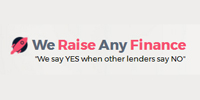Writing to customers and prospects can be an effective way to promote your business. Business emails and mailshots each have their own advantages; the important thing is to get the right tone of voice and message that will boost sales.
- Clarify the objective of the email or mailshot. Are you collecting leads, driving traffic to your website, making direct sales or providing information? Email is a good way to link to useful online content; hard-copy mailshots are more likely to be sales-driven.
- Identify your target audience - what do they already know about your business and products, what are their needs, and what objections might they have?
- If appropriate, identify different groups of readers and consider preparing different versions of the mailshot for each group.
- Personalise each letter with the customer's name and add your signature; you can also personalise emails. However, the letter or email must have specific appeal for the recipient; if it is too generic, it could backfire.
- Consider which method of communication is most likely to get noticed. Email works with existing customers - ensure they have given you permission to contact them. Direct mail leafleting is better for drumming up new local customers.
- Use a friendly and direct tone of voice in your emails and mailshots. Focus on "you" (the customer) rather than "we" (the business). Avoid unnecessary jargon.
- Decide what the main message of the mailshot will be and focus on the single major benefit you offer.
- Decide whether you can write the mailshot yourself, or whether you should invest a few hundred pounds in using a freelance copywriter.
- Produce a headline and an opening sentence which will highlight the main benefit and encourage the reader to read on.
- Make a credible offer: explain the reasons for buying your product or service, anticipate likely objections and provide facts to back up your claims.
- Maintain the reader's interest throughout, for example, by offering solutions to common problems or including provocative questions.
- Use short sentences and keep everything clear, simple and convincing.
- Make key points stand out by using bold or italics sparingly. Keep the look clean and uncluttered. Simple emails often get more attention because they look more personal.
- End with a call to action, telling the reader what to do next; make it easy (by including an email, web address or freephone number).
- Add a PS which restates your main point in a different way.
- For hard-copy mailshots, think about inserts that could support your message, such as a free sample or a brochure. With email, add links to specific landing pages on your website.
- Proofread your letter and try it out on colleagues and customers. Use sample mailings to test how effective it is.
